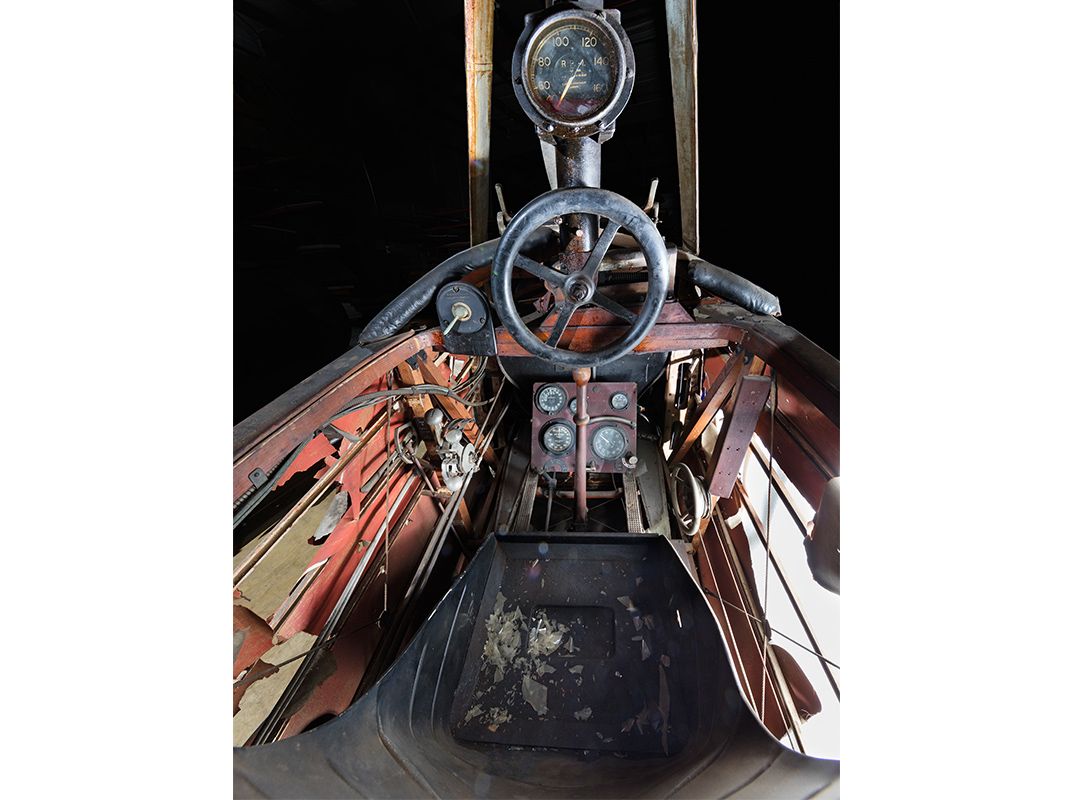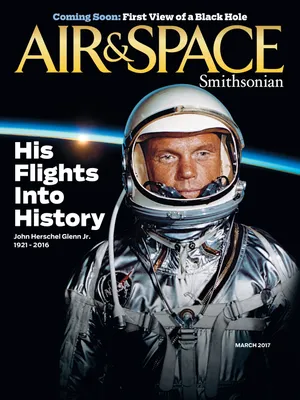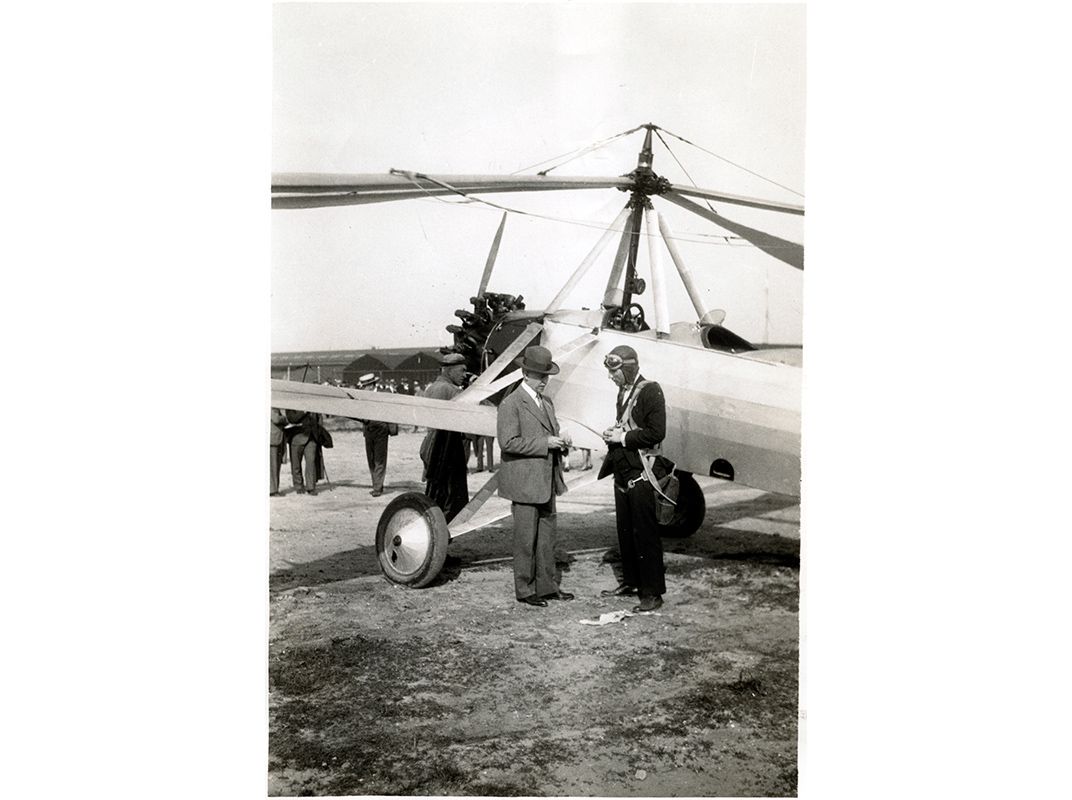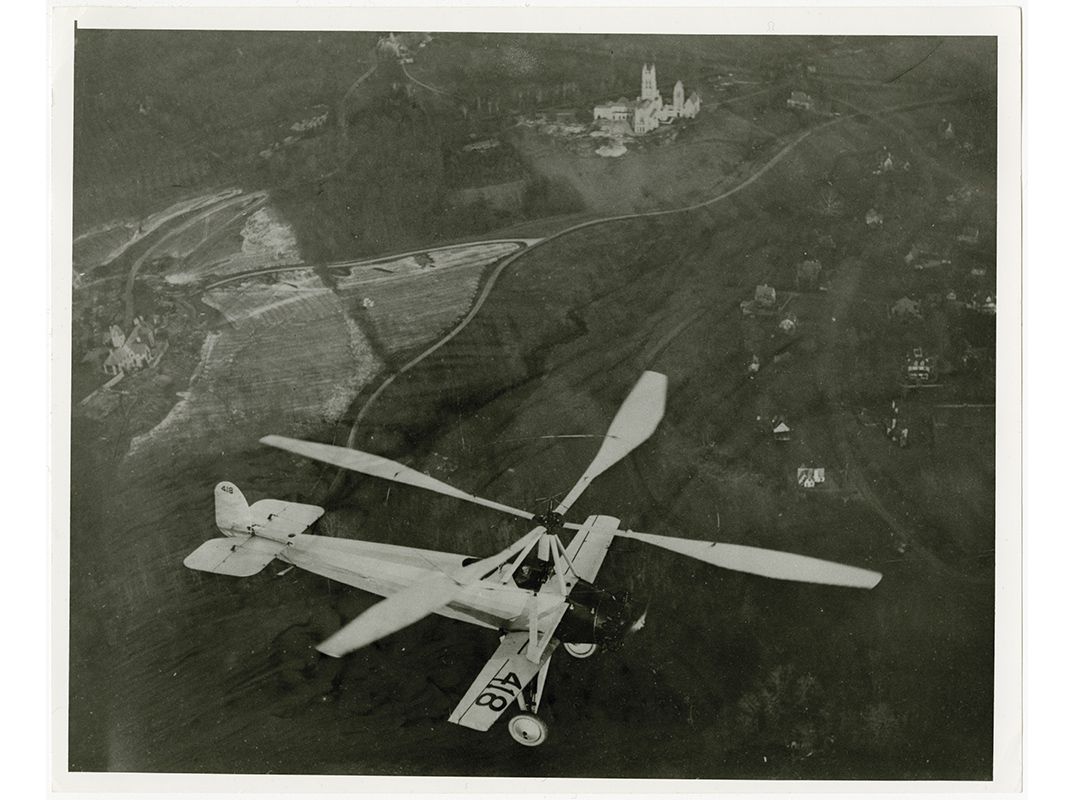The Coolest Autogiro You Won’t See at the National Air and Space Museum
The Museum’s helicopter expert picks an undisplayed favorite from the collection.
/https://tf-cmsv2-smithsonianmag-media.s3.amazonaws.com/filer/a7/22/a722d6f9-1ce3-4e3e-b627-dcebfba476af/16b_fm2017_nasm2016-04977-3_live.jpg)
If you follow the National Air and Space Museum on Twitter, you may have seen our participation last fall in “Ask a Curator Day.” As the curator of rotary-wing aircraft, I was asked if there was anything not on display that I would love to have out for people to enjoy. The Museum is able to display less than a quarter of our collection, so there are a number of aerospace wonders we’d like to exhibit but can’t, for a variety of reasons.
I immediately picked the Cierva C.8W Autogiro, the oldest successful rotorcraft in the United States. Though it is one of a handful of artifacts that flew to the Museum intact, time has not been kind to it. Being stored for decades without air conditioning and adequate humidity control has ravaged it, and the damage illustrates the wisdom of the Museum’s investments in state-of-the-art storage and conservation facilities like those at the Steven F. Udvar-Hazy Center in Virginia.
The Cierva C.8W was the first practical rotorcraft to fly in the United States. Various helicopter projects had been attempted in Europe and the United States through the first three decades of the 20th century, but none resulted in aircraft that were fully controllable or able to sustain flight. Juan de la Cierva, operating near Madrid, created a hybrid rotorcraft—an autogiro with an unpowered rotor that generated lift as a tractor propeller pulled the aircraft through the air, but depended on stubby monoplane wings for stability. Ailerons, a rudder, and an elevator provided control. In January 1923, Cierva flew the first airfield traffic pattern with a rotorcraft. The Cierva autogiro could not hover, but wouldn’t stall or spin, and a well-trained pilot could land it in tight spaces.
As Cierva developed his autogiro through the 1920s, U.S. airplane manufacturer and airline entrepreneur Harold Pitcairn became enamored with the idea of a safe airplane with good off-airport capabilities. He bought Cierva’s latest design, the C.8, built around the fuselage of an Avro 504—a British World War I-era biplane—and equipped it with a Wright engine. It made its first flight in the United States on December 18, 1928. In the months that followed, Pitcairn flew it extensively, most notably in May 1929 on a 1,000-mile round trip from his base near Philadelphia to the National Advisory Committee for Aeronautics facility at Langley Field in southeastern Virginia. In only two months, the C.8 validated Pitcairn’s enthusiasm, and he took the remarkable step of selling his airline and ceasing construction of his successful line of mailplanes in order to build Cierva-licensed autogiros with his own modifications.

Cierva had yet to publish a substantial theory of the design’s functioning, so Pitcairn and his engineers used the C.8W as a test bed, refining their understanding of autogiro flight. They also tested a variety of features for their future aircraft, particularly for starting the rotor, a process that consisted of wrapping a rope around the rotor head and having a ground crewman pull on it to begin rotation. One solution was to use surfaces to deflect the propeller slipstream into the aft section of the rotor.
Though Cierva had been selling his autogiros in small quantities, Pitcairn was the first to initiate full-scale production. The PCA-2 entered the market in early 1931 to a flurry of enthusiasm from the press. The reality was that while the exotic autogiro excelled at advertising (especially when equipped with a siren while towing a banner), it was far too expensive for private fliers and too slow for air taxi operations. After little more than two years, the market for autogiros collapsed. A handful of military orders kept Pitcairn in the autogiro business into World War II, when the success of Igor Sikorsky’s helicopter eclipsed nearly all thought of the autogiro. Cierva, who did not begin commercial production in earnest until he placed his wingless “direct control” autogiro on the market in 1933, fared better.
Once Pitcairn had begun development of his own prototypes, in the latter half of 1929, he and James Ray, the company test pilot, flew the aircraft less. Based on lessons learned from the C.8, Pitcairn gave his PCA-2 production aircraft about the same useful load, but incorporated numerous improvements, including a two-person forward passenger compartment, a 330-horsepower Wright R-975 engine that provided excellent climb performance, and a clutched power takeoff for mechanical speed-up of the rotor, which eliminated having to taxi up and down the field to build up the rotor speed necessary for flight. With his PCA-2 flying well, Pitcairn realized the publicity value of placing the C.8W in the Smithsonian. On July 22, 1931, after several hundred hours of test flying, James Ray landed the C.8W in front of the Smithsonian Castle on the National Mall.
For the next five years, the C.8W hung from the ceiling in the Arts and Industries Building. Unfortunately for the autogiro, the advent of practical helicopters at the beginning of World War II overshadowed it. The Smithsonian’s example was stripped of its wings, rotors, and wheels and put in storage. Eventually it made its way to the Paul E. Garber facility in Suitland, Maryland.
Like all doped fabric, the skin of the C.8W has shrunk through the years, shredding itself across the fuselage and wings of the aircraft. In the race to restore aircraft in time for the opening of the National Air and Space Museum’s Mall building in 1976, restorers used some of the C.8W’s engine hardware to make the Fairchild FC-2 ready for display—a practice that would be severely frowned upon today.
A range of Museum priorities, ranging from the opening of the Steven F. Udvar-Hazy Center to the revitalization of the Mall building to the preservation of high-profile artifacts like the B-26 Flak-Bait, has kept the C.8W out of the restoration/preservation process. But it is a key milestone on the road to the practical helicopter—and one of only a few original Cierva Autogiros from the 1920s remaining—so preserving it is of national significance. As rotary-wing curator, I have made this artifact my top priority for conservation. The C.8W approaches its 90th anniversary; I hope the next 90 years will be kinder.


